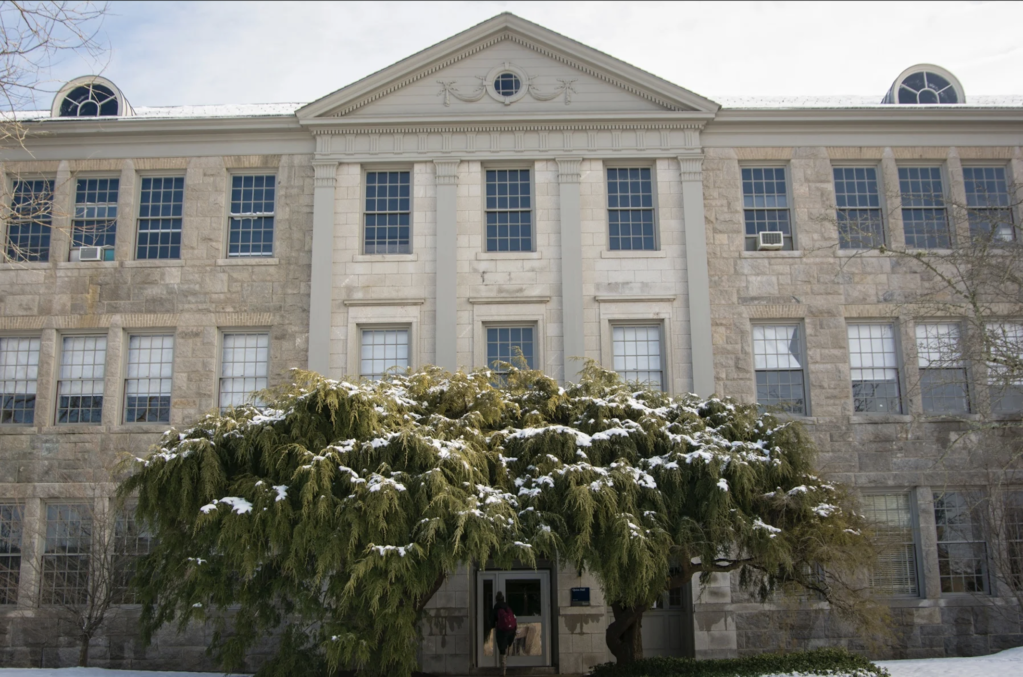Pictured: Quinn Hall, located on the URI Quad. PHOTO CREDIT: uri.edu
Quinn Hall, built in 1936 and opened in 1937, once served as the University of Rhode Island’s main building for the College of Home Economics before social change shifted its purpose.
When the building was constructed, the United States had been reaching the end of The Great Depression. The president at the time, Franklin D. Roosevelt, aimed to restore prosperity and security to Americans.
“Quinn Hall was built quickly, since it was a part of Roosevelt’s New Deal program along with Green Hall and Roosevelt Hall which were built in conjunction with Quinn,” Catherine DeCesare, assistant professor in the department of history, said.
Roosevelt’s New Deal program sought to “promote economic recovery and putting Americans back to work through Federal activism,” according to archives.gov.
DeCesare explained that the New Deal provided Rhode Islanders with jobs because builders were needed to construct these new halls on the URI campus.
“Quinn was built for a specific purpose which was home economics which was a growing and one of the most popular majors for women in the 1930s and it continued to be the most popular through the 1970s,” DeCesare said.
She goes on to emphasize the popularity of the major since coming out of The Great Depression required people to use resources wisely and make the most of what they had, which is what this major promoted.
During the 1960s and 1970s, however, many movements began taking place such as the Civil Rights Movement, opposition to the Vietnam War, and the beginnings of the gay rights and feminist movements.
Women began to create waves of social movements and political campaigns for reform on the inequality in the United States between men and women. Due to this, Quinn Hall began to see some change.
“Afterwards, there were still home economic types of majors such as textiles, which today still has its home in Quinn,” DeCesare said.
However, the major began to shift towards the science aspect of home economics focusing on human development, nutrition and food in addition to textiles and apparel.
The name of the hall also has a link to another movement, specifically a political movement. Robert E. Quinn, DeCesare explained, was the lieutenant governor of Rhode Island during the 1920s and 1930s. During his time, he was a key figure in the “Bloodless Revolution,” where he was able to change the political partisanship of Rhode Island from dominantly Republican to Democratic.
“It’s incredible to see the cultural and social impact that our campus has,” Noah Figliola, a fourth-year student majoring in history, said. “Like yeah they’re cool old buildings, but they also have stories and the people they’re named after have their stories too.”
DeCesare also shared some interesting facts about the building such as the granite used to construct the building came from the quarries on the campus, but they eventually ran out and imported granite from Westerly, Rhode Island. Today, Quinn Hall is the College of Human Science and Services Textiles Merchandising and Design and Gerontology. The hall also has the Historic Textile and Costume Collection and Gallery where students can observe the designs from students of the past.

